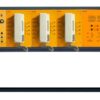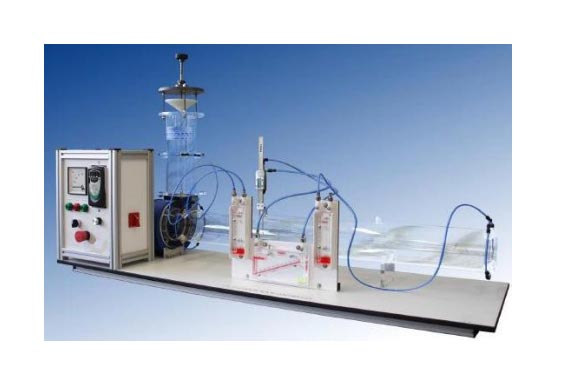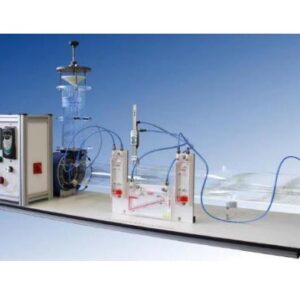TRAINING OBJECTIVES
- Study and obtaining the characteristic curves of a centrifugal fan with straight vanes.
– Static pressure – flow rate (DPs-Q)
– Total pressure – flow rate(DPt-Q)
– Power – flow rate(P-Q)
– Performance – flow rate (-Q)
- Study and obtaining the characteristic curves of a centrifugal fan with inclined forward vanes.
– Static pressure – flow rate (DPs-Q)
– Total pressure – flow rate(DPt-Q)
– Power – flow rate(P-Q)
– Performance – flow rate (-Q)
- Study the regulation of a centrifugal fan by varying its rotational speed and obtaining new characteristic curves according to speed.
- Pitot tube usage. Difference between static, dynamic and total pressure.
- Obtaining the flow speed profile in the suction pipe.
- Flow measure by the Pitot tube usage.
TECHNICAL DATA
Inner diameters:
- Suction and discharge piping
– Inner Ø = 114mm
– Outer Ø = 120mm
Fan features:
- Pressure increase: 700Pa
- Maximum flow volume: 1,000m³/h
- Power consumption: 250W
- Motor speed: 2.810rpm at 50Hz
Manometers:
- Vertical manometer 100 mm WC
- Pressure transducer 50mm WC
Other elements:
- Variable frequency drive
– Motor rated power: 0.37kW
– Input fuse maximum current capacity: 10A
– Input current draw (full load): 5.8A
– Output current RMS 100%: 2.2A
– Overload current at 150% (during 60s): 3.3A
– Minimum brake resistance value: 68 Ω
- Power indicator: 0-400W
- Pitot tube Ø3mm and 200mm length.
- Supplied impellers:
– forward inclined blades
– backward inclined blades
TECHNICAL DESCRIPTION
A Pitot tube can measure the air velocity at any point of the tube showing its values on a digital display. Vertical and inclined gauges allow a correct reading of the pressures.
The inverter allows the speed variation and, at the same time, it is possible to observe the electric power consumption by means of a power meter.
Through a conical cap placed in the air outlet, it is possible also to induce an adjustable load loss and study the fan operating points.
















